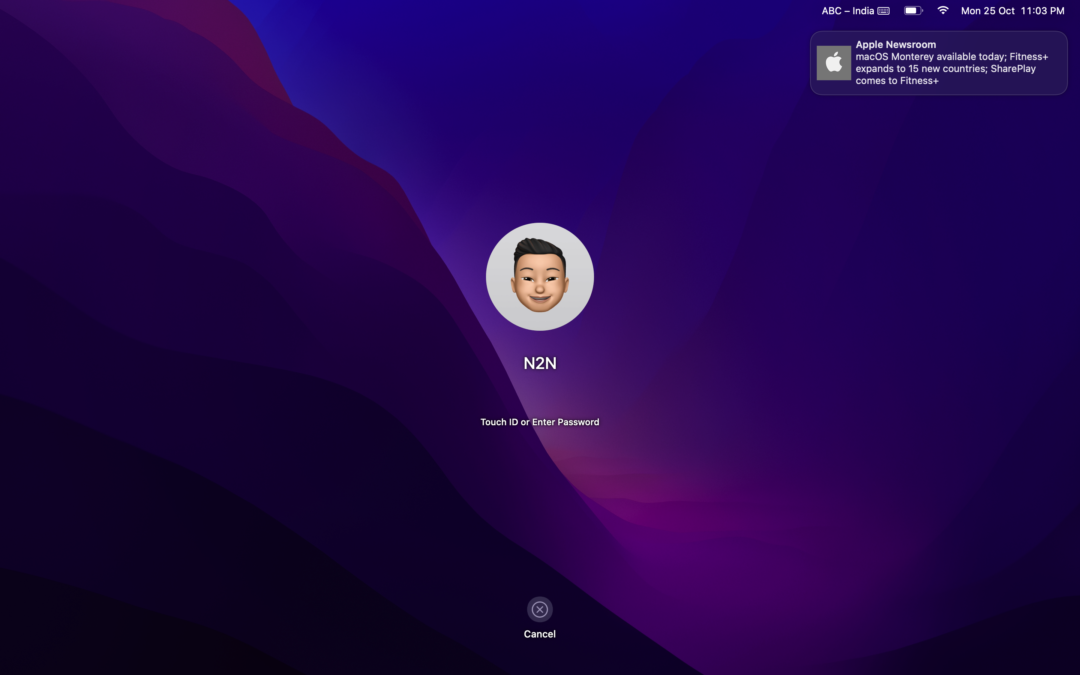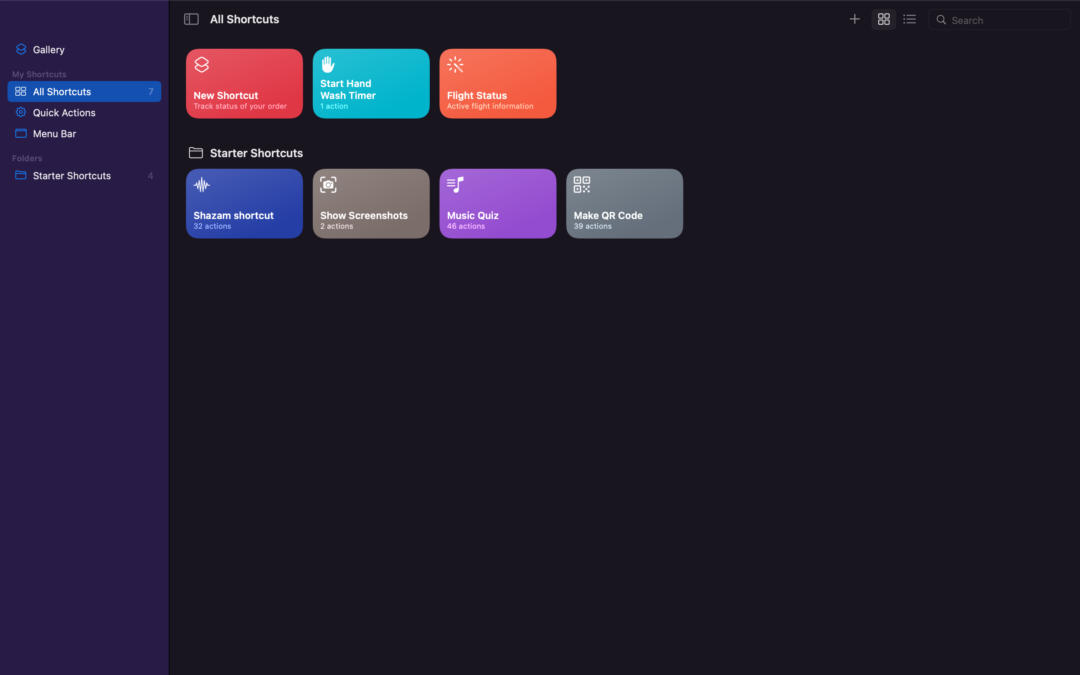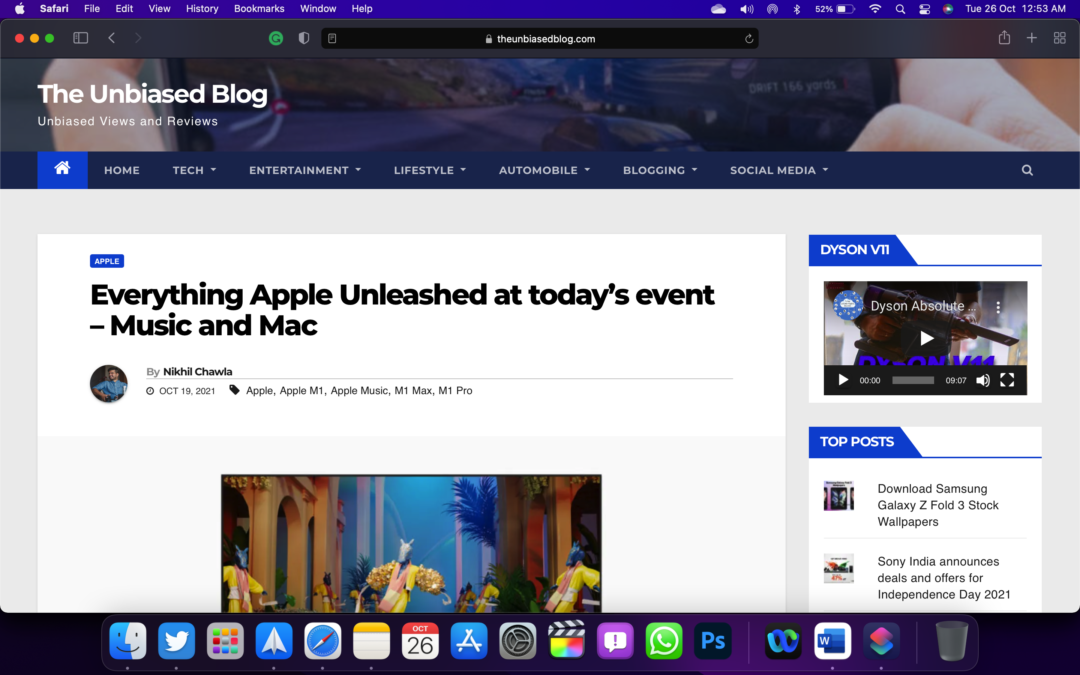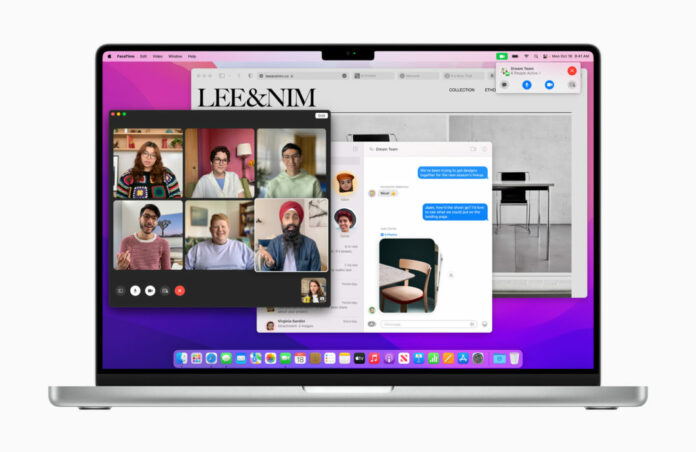It’s the 25th of October and macOS Monterey is finally available to all. This macOS (12) is the 18th version of the operating system is named after Monterey Bay. Like the previous few version of the macOS, this one too follows Apple’s tradition of naming macOS releases after locations in California that started with OS X Mavericks (10.9).

So let’s talk about the biggest changes that the macOS gets this year. Honestly, Apple brings about a lot of subtle changes with all its updates so talking about each of them isn’t possible. But since, we have been testing the macOS Monterey since the first Preview release in June so there is a lot to talk about. First, let’s look at all the versions that we have tested over the months since June.
| Version | Build | Date | |||
|---|---|---|---|---|---|
| 12.0 Beta 1 | 21A5248p | June 7, 2021 | |||
| 12.0 Beta 2 | 21A5268h | June 28, 2021 | |||
| 12.0 Beta 3 | 21A5284e | July 14, 2021 | |||
| 12.0 Beta 4 | 21A5294g | July 27, 2021 | |||
| 12.0 Beta 5 | 21A5304g | August 11, 2021 | |||
| 12.0 Beta 6 | 21A5506j | August 30, 2021 | |||
| 12.0 Beta 7 | 21A5522h | September 21, 2021 | |||
| 12.0 Beta 8 | 21A5534d | September 28, 2021 | |||
| 12.0 Beta 9 | 21A5543b | October 6, 2021 | |||
| 12.0 Beta 10 | 21A5552a | October 13, 2021 | |||
| 12.0.1 RC | 21A558 | October 18, 2021 | |||
| 12.0.1 RC 2 | 21A559 | October 21, 2021 |
A lot of people are apprehensive about trying out Beta software but we as journalists have to try out all that comes out as developer or public beta releases. In fact, in the month of July we were testing – iOS 15, iPad OS 15, macOS Monterey, Watch OS7, Android 12 and Windows 11 all in Beta version. This qualifies for ‘living on the edge’, right?
Well not really as Apple developer releases are surprisingly stable and give you an opportunity to test new upcoming software. And while testing, users can report issues to Apple through the Feedback Assistant tool. 

The Changelog:
Shortcut and TestFlight
While Shortcuts and TestFlight have been there for the iPhone for a while now, they finally make way to the macOS. With the help of Shortcuts, allows users to create macros (automation) for executing specific tasks on their device. For example, at the start of the Covid-19 pandemic, I created a ‘shortcut‘ on my iPhone to remind me to wear a mask when I’m about to step out from my place and remind me to wash my hands when I enter my place.

Similarly, TestFlight that allowed iOS users to test apps (OTA) before release on the App Store is now available for macOS. This means testers/reviewers like me can test 3rd party apps on macOS before they are officially released.
Universal Control
Universal Control, which allows a single keyboard and mouse to interact across multiple Macs and iPads at once. It is an addition to the ‘Continuity’ feature that we love on the Apple Ecosystem. Users can place devices next to each other and instantly move the cursor from one device to the other — no setup required. They can use their Mac keyboard to type text on any device, or drag and drop content back and forth easily between devices. Users can even draw with Apple Pencil on iPad, and place their illustrations right into apps on their Mac, enjoying the powerful capabilities of all their devices at once.
Universal Control will be available on Mac computers with the Apple M1 chip and Mac computers with an Intel processor on MacBook Pro (2016 and later), MacBook (2016 and later), MacBook Air (2018 and later), iMac (2017 and later), iMac (5K Retina 27-inch, Late 2015), iMac Pro, Mac mini (2018 and later), and Mac Pro (2019). iPad requirements: iPad Pro, iPad Air (3rd generation and later), iPad (6th generation and later), and iPad mini (5th generation and later).
Redesigned Safari browser
Safari offers users more control over how they browse the web, including a new Tab Groups feature that allows users to easily save and organize tabs — great for planning trips, researching projects, and storing the tabs users visit regularly. Tab Groups sync across Mac, iPhone, and iPad, so users can continue their project from anywhere, and easily share tabs with friends and family.

Safari comes with new ways to experience the web, including a new optional compact tab bar design that gives users more space to browse, integration with Shared with You so users can easily access links sent from Messages, and support for Quick Note makes it easy to keep track of information discovered on websites. Safari also offers users more privacy protections, with Intelligent Tracking Prevention now preventing trackers from profiling users with their IP addresses.
AirPlay for macOS
With AirPlay to Mac, it’s easy to play, present, and share just about anything from iPhone or iPad right to a Mac. Use AirPlay to share the latest movies and games, photos, and presentations directly to Mac’s stunning Retina display or to play music from across the room to the high-fidelity sound system in your Mac. In simpler words, with AirPlay you can use your Mac as a secondary display and wirelessly cast from your iPhone or iPad. Isn’t that brilliant?
The support for playing AirPlay content received from iOS and iPadOS devices, as well as from other Macs (Available on MacBook Pro (2018 and later), MacBook Air (2018 and later), iMac (2019 and later), iMac Pro (2017), Mac mini (2020 and later), Mac Pro (2019), iPhone 6s and later, iPad Pro (2nd generation and later), iPad Air (3rd generation and later), iPad (6th generation and later), and iPad mini (5th generation and later). Older iPhone, iPad, and Mac models may share content at a lower resolution to supported Mac models when “Allow AirPlay for” is set to “Everyone” or “Anyone on the same network” in Sharing preferences.)
Live Text and Visual Lookup
FaceTime gets more interactive and platform agnostic (in a way)
Enhancements to FaceTime, including the ability to share screen, and the SharePlay feature which provides a way to experience content simultaneously and in sync (e.g. music or TV shows).
Focus Mode
Focus to set different modes to filter notifications across iPhone, iPad and the Mac range. Focus filters notifications from apps and people based on what the user wants to focus on at that moment. When a user has Focus set on their Mac, it automatically sets across their other Apple devices. While using Focus, status is automatically displayed in Messages and supported communication apps, like Slack, so others know not to interrupt when users are wrapping up a project or on vacation.
Newer and Quick(er) Notes
With Notes in Monterey, users have new ways to collaborate, stay organized, and create notes from anywhere. Quick Note gives users the ability to jot down notes while in any app, so it’s easy to capture thoughts and ideas at any moment. Users can also add links from apps to a Quick Note, great for when they need to remember a website in Safari or quickly find a location in Maps. New collaboration tools let users add mentions, as well as view updates to a shared note with the new Activity view. In Monterey, it’s easy to organize with Tags — a faster way to categorize notes and make them easy to find with the new Tag Browser.
Here are some other subtle changes in macOS Monterey
- Ability to factory reset the device from the System Preferences app
- Introduces Low Power Mode for Mac (Supported on MacBook (Early 2016 and later) and MacBook Pro (Early 2016 and later).
- Removal of the previously bundled PHP interpreter
- The parameters of the Time Machine backup functionality have been tweaked to exclude a greater extent of system files.
- Shared with You makes it easy to enjoy content shared through Messages right in Photos, Safari, Apple Podcasts, Apple News, and the Apple TV app. Users can easily find shared content, see who recommended it, and reply inline on the original thread it was shared.
- Maps offer an all-new immersive experience with extraordinary detail for roads, neighbourhoods, trees, buildings, and more, all brought to life right on Mac’s stunning display.
- iCloud+ combines everything users love about iCloud with new premium features, including Hide My Email, expanded HomeKit Secure Video support, and an innovative new internet privacy service, iCloud Private Relay, at no additional cost. All iCloud+ plans can be shared with people in the same Family Sharing group, so everyone can enjoy the new features, storage, and elevated experience that comes with the service. Current iCloud storage subscribers will be upgraded to iCloud+ automatically at no additional cost.
- Spatial audio comes to Macs with the M1 chip, delivering a theater-like experience with AirPods (3rd generation), AirPods Pro, and AirPods Max. And with dynamic head tracking, the sound stays fixed to the Mac even as the user moves their head.
- Mail Privacy Protection prevents senders from learning whether an email has been opened, and hides IP addresses so senders can’t learn a user’s location or use it to build a profile on them.
- New accessibility features let anyone add alternative image descriptions right from Markup, and improved Full Keyboard Access and new cursor customization options provide more flexibility when navigating Mac.
Compatibility
macOS Monterey is compatible with all Macs equipped with Apple silicon SoCs, as well as the following models equipped with Intel CPUs. Monterey drops support for various Macs released 2013-2015.
- MacBook: Early 2016 and newer
- MacBook Air: Early 2015 and newer
- MacBook Pro: Early 2015 and newer
- Mac Mini: Late 2014 and newer
- iMac: Late 2015 and newer
- iMac Pro: Late 2017
- Mac Pro: Late 2013 and newer
https://www.instagram.com/p/CVddFk1hGJO/?utm_source=ig_web_copy_link
The macOS Monterey may not look like a major visual change from Big Sur but it offers some of the biggest changes to macOS in recent times. And a lot of these changes and features offer a collaborative workflow, safer apps and enhanced use of the Apple ecosystem. A much appreciated and timely update by Apple to combat these pandemic times.
But even after testing macOS Monterey (Preview) for months, we can’t state that we have tested each and everything thoroughly as Apple adds so many new features and tweaks that you keep exploring new things each day. So stay tuned and follow us on our social media platforms to stay updated.











